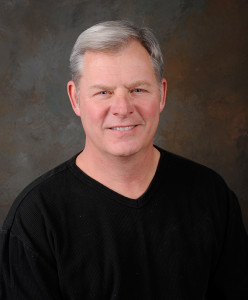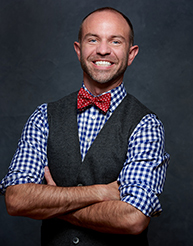Turkey, football and the Macy’s Parade are annual traditions for the majority of families as they celebrate Thanksgiving. And for the past 10 years, the Macy’s Great American Marching Band has been a major highlight of the parade for marching participants and audience members alike.
Thanksgiving 2015 marked the 10th annual performance of the Macy’s Great American Marching Band, an honor band comprising high school students who come from all over the country and are accepted based on an application and video audition. The creative forces behind the band include its director, Dr. Rick Good of Auburn University, and Wesley Whatley, creative director for the Macy’s Parade and Entertainment Group.
 Halftime: What is your background?
Halftime: What is your background?
Good: I went to Louisiana State and got my master’s in instrumental conducting. That opened my eyes to marching and football at the collegiate level. I went to Arizona State to get my doctorate in low brass performance. After that, I was fortunate enough to get hired by Auburn University. Now I’m in my eighth year as director of bands.
 Whatley: I started piano when I was 4, then started marching band in high school, and became drum major my sophomore year. I see marching band as the moment when I gained confidence, not only as a musician, but also as a leader. When it came time to go to college, I chose Stetson University, majored in bassoon, and got a double degree.
Whatley: I started piano when I was 4, then started marching band in high school, and became drum major my sophomore year. I see marching band as the moment when I gained confidence, not only as a musician, but also as a leader. When it came time to go to college, I chose Stetson University, majored in bassoon, and got a double degree.
Halftime: How did this band originate?
Whatley: It wasn’t a new idea. In the 80s and early 90s, the head director of the FAMU [Florida Agricultural and Mechanical University] Band, William P. Foster, led the McDonald’s All-American High School Band. In celebration of Macy’s 80th anniversary parade in 2006, we produced the first Macy’s Great American Marching Band. We decided to make it an annual event.
Good: I got a call from Wesley Whatley about 12 years ago. He described the Macy’s band as two parts. First, we want to entertain 1 to 2 million people on the parade route. Second is the Herald Square performance you see on TV. He wanted crowd appeal and liked what I was doing at Auburn.
Halftime: What is the band’s culture?
Good: It’s all about entertaining America and having a great time in New York. They get these friendships and these memories. The great part about this band, too, is it’s not something where you rehearse all the time. The kids fly in on Saturday. On Sunday they wake up and go sightseeing, and we get together just an hour and a half for a music rehearsal. Monday’s the day we practice the most, 8 to 3. Then they get on buses and go into the city. Then Tuesday we only practice until 1, Wednesday only until noon.
Halftime: What is your proudest moment with the band?
Whatley: A couple years ago, we opened the telecast. It was an exciting moment … to put the marching band in a place of honor.
Good: The thing that makes me the most proud is just to see those students, to see what they can do in a short period of time. The other thing that I’m most proud of is that we started this whole TV telecast. You see [the announcers] come out, and there are snare drums following, and they say, “Let’s get this party started!” Then it goes right to the band on Herald Square.
Halftime: What is the greatest challenge you’ve faced with the band?
Good: We don’t have a lot of time to review basics. We just do whatever we need to do in the routine. On the street, there are no eight-to-five markings. They have to know what to do. You really need to book it down the parade route. There’s hardly any time to breathe!
Whatley: One of the challenges is answering the question: How do we continue to reinvent this experience and keep it relevant? Different kids come in and out, but we have an audience that comes in every Thanksgiving. We also have our TV audience. So how do we keep it fresh? Rick and I partner on the programming: How big will the band be, what they perform, what visuals we want. I say, “Hey, Rick, let’s come up with pieces that will be a great opening statement.” Or I’ll say, “We need to herald Santa in with some pomp and circumstance.” We wanted to make sure that the Macy’s band wouldn’t deliver the same thing every year.
Halftime: How was the 10th anniversary year?
Good: It was a great milestone. You look back and think, wow, that happened so fast. Macy’s sells a bear with the marching band uniform on it. Yahoo had a big ad before the parade that featured the row of trumpets on the front-page story. It’s a lot of work but so gratifying.
Whatley: We invited any alumni that had marched over the past decade to come march with the high school students. We had about 60, maybe 70, alumni that came back.
Halftime: What advice do you have for marching band students?
Good: Be well-rounded. Concert band helps marching band, and marching band helps concert or symphonic. I tell them never to choose one or the other.
Whatley: Savor the moment. The amount of community, music, and pageantry that we get to experience as a marching band, it’s so special. If you have the chance to go to a college with a marching band, make that choice. Do it as long as possible.


